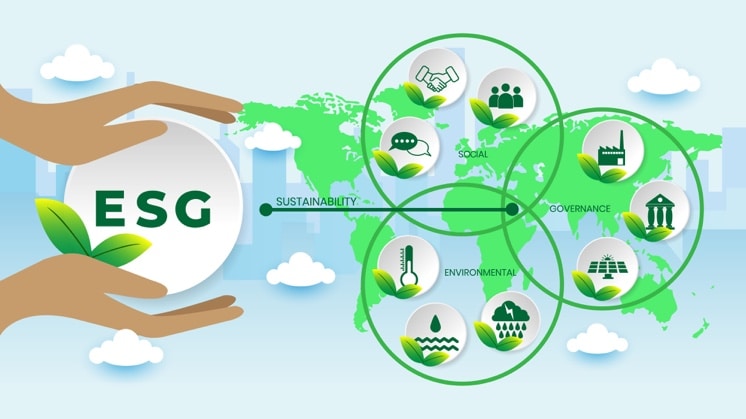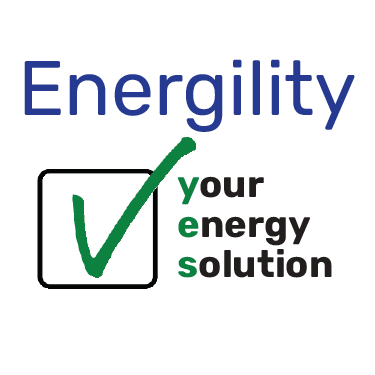Basics of an ESG Report
ESG (energy, social and governance) reports are getting a lot of attention right now because there is talk of standardizing what the reports entail and what measures would be included. Currently companies can use different standards (ex. Sustainability Accounting Standards Board (SASB) or Global Reporting Initiative (GRI)) when compiling these reports and this can lead to confusion. Think of the old adage of comparing apples to oranges where there are both similarities and differences. Over the next two Energility Tips posts, we will discuss what ESG is and then how an organization can increase their “E” on an ESG report.
ESG reporting has become closely connected with sustainability and most people talk about the environmental (E) part of ESG. As a result, common questions arise: What are you doing to reduce your carbon footprint? Are you putting solar panels on the buildings? How are you continuously improving? Or how do you even get to “net zero” or “carbon neutral” by 2030, 2040, or 2050? However, ESG is also about how you take care of your employees, supply chain (both labor and acquiring resources), and how you manage your company as a whole. ESG is, in fact, about the E-environmental, S- social, and G-governance impacts of a particular organizatio

This image from Iberdrola shows how interconnected the different aspects of an ESG report are.
First let’s define what the letters stand for in ESG so we have a better understanding of how this is a holistic approach to reporting a business’s progress and success. This holistic approach to reporting allows consumers and investors to make a choice that holds up to their own personal ethics. Many individuals consider this when deciding who to purchase from, who to invest in, and who to work for.
E = Environmental impact. To understand this, you must connect actions of the business with the byproduct that they generate from consumption like carbon dioxide (CO2), hydrofluorocarbons (HFCs), or other emissions. This involves looking at details like connecting direct operations of buildings uses in the form of electric, natural gas, or other heating fuel sources, fuel consumption for various business travel methods, supply chain operations, etc. These details include inventorying greenhouse gas emissions, looking at your energy purchasing strategies, and how your business supply chain or other operational actions of the business impact your environmental footprint. The environmental conversation has been going on for decades in the US, especially since the creation of the Environmental Protection Agency (EPA) in 1970.
A few examples of “E” from What is ESG Investing & What Are ESG Stocks?
- Greenhouse gas emissions
- Renewable energy usage
- Relationship with the U.S. Environmental Protection Agency (EPA) and other environmental regulatory bodies
S = Social impact. The social actions, or how a company treats the individuals they interact with, need to be sustainable. This includes contracted labor (not just those employed by the company) and how they handle security and safety. An organization must show consistent and favorable treatment of their work force, supply chain labor, and local community. When social issues arise, they must handle the concerns of their associates and staff with dignity and respect. In issues of societal concern, the companies must show actions towards addressing the issue.
A few examples of “S” from What is ESG Investing & What Are ESG Stocks?
- Employee treatment and compensation
- Diversity and inclusion in hiring, promotions, and pay increases
- Ethical supply chain sourcing
G = Governance. This is how the company handles company leadership and business ethics. This metric is measuring how the company handles its financial practices– fair wages, executive compensation, financial transparency, proper accounting practices, business ethics, and diversity of representation in their corporate boards.
A few examples of “G” from What is ESG Investing & What Are ESG Stocks?
- Policies that define and enforce ethical business practices
- Separation of the chairman and CEO roles
- Relationship with the U.S. Securities and Exchange Commission (SEC) and other regulatory bodies
ESG reporting is a complicated idea because some of the metrics are not easily defined and also because of the variety in metrics used. However, individuals are using these reports to decide who to purchase from, who to invest in, and who to work for.
Next week Energility Cofounder Justin Kale will talk about ways an organization can show progress on environmental aspects by conserving energy, using energy efficient measures, and utilizing renewable energy whether on site generation or through energy purchasing.
Subscribe to Energility's Tips

